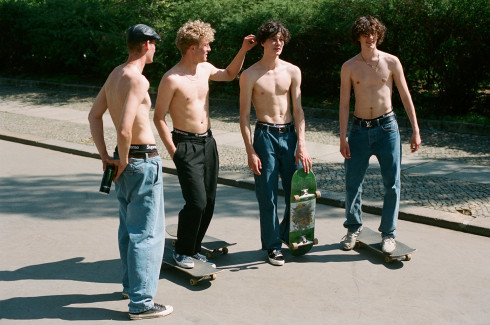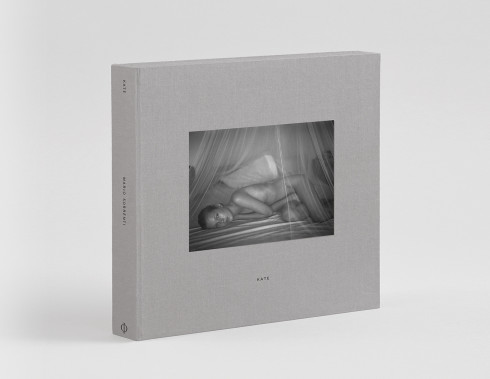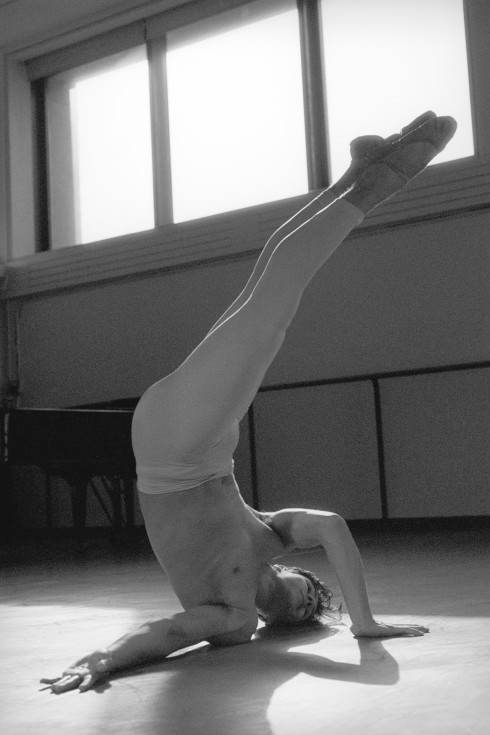TLM09: PARSONS MFA
“When you write a program, it’s a theory—one you hope will work—but after that you’re in the hands of the students who have to lead it,” says Shelley Fox, director of the Parsons MFA in Fashion Design and Society, which graduated its first class in June.
This was no small challenge for the inaugural group of eighteen students who were asked to be trailblazers in a program simultaneously more practical and less traditional than its competitors, but Fox’s carefully selected students, a number from nontraditional design backgrounds, rose to the occasion. The MFA graduates presented their thesis collections in May to industry insiders and are now entertaining career opportunities with Ralph Lauren, LVMH, Donna Karan, Céline, Fendi, Erdem, and Calvin Klein, among others. A New York Fashion Week runway show at Milk Studios in September gave their work global exposure.
“This is not a program about creating American fashion,” Fox says adamantly. “I don’t really know what that means anymore anyway. I think of this as an international program based in New York.” In fact, only one of the eighteen graduates hails from the United States, while the rest are Dutch, Norwegian, British, Australian, Italian, Korean, Japanese, Taiwanese, Chinese, Peruvian, Swiss, and Irish.
Nonetheless, the program has roots with Donna Karan, a designer who is considered quintessentially American. In the last several years, the origin of the world’s exciting young design talent seems to have drifted from the US, and Karan felt strongly that the country needed to develop designers here at home—regardless of where they may hail from. Despite New York’s status as a fashion capital, the city’s fashion education system has long been seen as more commercial than artistic, and was certainly never viewed as a rival to storied European institutions such as Central Saint Martins and the Royal College of Art. Karan endowed a substantial amount of her own money to launch an MFA program at Parsons that would challenge this perception and, in January 2008, then-designer Fox arrived in New York to begin building the curriculum and recruiting the first class of students, who arrived to begin classes in September 2010.
The design of the Parsons MFA program cannot be separated from Fox herself. “I think the program reflects my personality and experience as a designer,” she says. Fox, known for her conceptual approach and unorthodox design sensibility and techniques, has frequently collaborated with dance companies, filmmakers, photographers, and other designers. “The way this program runs is very personal to me, and it has my stamp on it. I feel like I run it in the same instinctive, intuitive way I used to run my own fashion business—it’s smaller, more specialist, and quite fluid.”
Fox’s hand is immediately evident in the selection of students. She has a talent for looking beyond standard admissions criteria and embracing individuals with unorthodox elements to their backgrounds who would rarely be welcomed into other MFA programs. Although her methods aren’t perfect—two students were dropped from the program in the first semester—the results are often intriguing.
“When people ask me what I’m looking for, it’s really hard to put down in words. Certainly an openness, a certain amount of skill, but there’s also a gut instinct,” says Fox. Sometimes that gut instinct leads her to rock-solid technical know-how and experience—and other times she takes a leap of faith. Beckett Fogg, the program’s sole American, completed her undergraduate degree in architecture, but Fox found that her understanding of architectural drawings and design translated surprisingly well into apparel. Her thesis collection of black or white pieces had a unique texture courtesy of a press in Newark normally used on leather car seats. First-year student Yung Chi Tsai, who goes by Alison, holds a doctorate in biology. “There was something interesting about her though,” says Fox. “Her mathematical mind applies itself well to knitwear. She had never worked on a knitting machine before, but it’s like she’s done it for years now.” Tsai produced a three-outfit knitwear collection for Feel the Yarn for Pitti Filati in Florence in July.
In addition to her studies in fashion design, designer Lucia Cuba also has a BS in social psychology, an MS in educational psychology, and a PhD in public health. This unique background led to a politically charged collection called “Artículo 6” designed to invite dialogue about forced sterilizations in her home country of Peru in the 1990s. “I needed a program that wouldn’t just give me a theoretical approach to fashion, but one that would allow me to practice as a social researcher as well as a fashion designer,” Cuba says. “Parsons was the perfect fit.”
Being a new program is part of what gives Fox such freedom and flexibility. “Because the European programs like Central Saint Martins and Royal College are more established, they have people going directly into menswear, womenswear, knitwear, textiles, and prints from a very trained background. When the students come here, I’m not dictating certain numbers for certain specialties. I just want the best students.”
The result is that students are free to be drawn into fields they would not have considered before, especially knitwear thanks to the school’s new state-of-the-art knitwear lab. Six knitwear students have emerged from the program’s first class, according to Fox, including Paula Cheng, who won the “Savage Beauty: Alexander McQueen” competition run by the Metropolitan Museum of Art. Despite being admitted to Central Saint Martins and the Institut Français de la Mode in Paris, Cheng opted for Parsons and its “big, brand-new knitting machines.” “After I saw the possibilities in New York, I decided to stay and study under Shelley, who promised a lot of things,” Cheng says. “And she delivered them.”
In one way, the Parsons MFA is quite similar to its peers. “All of the top MFA programs work with the students to define their identities and push the industry forward,” Fox says. For this purpose, she employs assignments like “Hole in the Map,” which starts off the course. Each student receives a map of Manhattan with a hole in a location with the directive to research, visit, observe, and think. “We try to get them to realize there’s things they take for granted every day because they’re looking but not seeing. We break down the preconceived notion of how a fashion designer works or should work,” she explains.
A particularly unique way Fox forces the students to examine themselves is through the use of photo and video. This multidisciplinary approach was inspired by Fox’s own personal experiences—she produced films of her own collections when she didn’t have the money for presentations—and made possible by the fact that the MFA program has access to the human and technical resources of the New School as a whole. For example, students were immersed in fine arts by a Parsons professor who took them to the Whitney Biennial and on visits to artists’ studios before asking them to make a two-minute film—without using any of their clothes.
Fox’s use of the larger university does not stop at the arts. Each student is required to take two electives (a class comparing Alexander McQueen to Steve Jobs and analyzing moments of inspiration was a favorite) and attend seminars across anthropology, design innovation, history, and more. This curriculum is designed to allow students to get in tune with how other disciplines feed into their work. Case in point is Carly Ellis, whose creative process for her thesis led her from streetwear to a documentary on South Africa’s Ndbele tribe to candy on newsstands to pixelated Skype screengrabs. The result, a print-intensive collection of elevated streetwear separates, references each inspiration without resorting to literalism.
Beyond the university, Fox also draws on the vast resources of New York City itself, bringing in designers like Olivier Theyskens and Karan herself as well as buyers, entrepreneurs, and corporate executives. The great advantage of Parsons’ New York location, she says, is its “connections, its vitality, its links to the industry.” While all MFA programs develop the talent of their designers, it is important to Fox to balance that growth with an understanding of fashion as a business, inviting, for example, former Barneys Fashion Director Julie Gilhart to address the students. “When I was taking my work to Paris and certain stores weren’t buying it, I couldn’t understand why,” Fox recalls. “For the student to understand how buyers think is so important.”
The students Fox is currently sending off into the fashion industry, several to American design houses, are embodiments of this unique MFA program. Besides their spectacular talent and creativity, their eclectic education has made them capable beyond even Fox’s expectations. “They are so dynamic,” she says of her first eighteen. “They’re brilliant at surviving. If they want to get something, they do.”

















